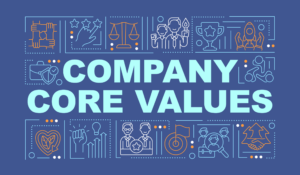Employee engagement is essential to success in any industry, but particularly so for the healthcare industry. Learn how the right communication app benefits hospitals.
As hospitals realize the importance of having an engaged workforce, they have been delighted to discover that by implementing a carefully-designed employee communication app, they can improve employee engagement significantly and reap the many associated benefits. Here are five ways the right employee communication app benefits hospitals.
1. Employee Turnover and Related Costs Decrease
There are many ways to decrease employee turnover, and an employee communication app can’t make up for lax hiring practices or a poorly managed facility. However, when good hiring practices and commitment to employee development are in place, the addition of an employee engagement app can lead to measurable benefits. A study conducted by Gallup in 2010 found that once employee engagement improved, turnover dropped considerably. In the facility studied, turnover fell from 22 percent in 2010 to 15 percent in 2013. Turnover of registered nurses was cut nearly in half, falling from 25 percent in 2010 to 13 percent in 2013.
2. Safety Improves for Patients and Employees
Employee engagement has been shown to play a significant role in reducing accidents on the job. In a healthcare setting, workplace safety is much more of an issue than it is in many non-medical work settings, and a study at Loma Linda University Medical Center found that employee safety plus employee engagement equal a safer environment. Not only is the environment safer for patients, but employee safety is enhanced as well. The employee communication app that promotes best practices and medical team cohesiveness can, when deployed in the context of a safety-conscious workplace, reduce patient safety issues and cut down on workers’ compensation claims.
3. Operating Margins and Revenues Increase
It only stands to reason that operating margins would become more generous and revenues increase when the workforce is fully engaged in the work at hand. A drop in employee turnover rates, if nothing else, contributes to a healthier bottom line. Strategies designed to increase engagement of hospital physicians with referring privileges increase patient revenue per physician and drive corporate growth. Furthermore, less tangible indicators, like patient satisfaction, increase with higher healthcare provider engagement, leading to referrals and a lower likelihood of former patients choosing other facilities. Just another way how the right communication app benefits hospitals.

4. Physicians Gain Productivity
Much attention has been given to the reduction in RN turnover in hospitals, but physician burnout is another serious phenomenon that can have negative effects on employee engagement as well as hospital revenues. A Jackson Healthcare study from a few years ago reported that an astonishing 42 percent of physicians said they felt dissatisfied in their medical practice. Dissatisfaction and burnout aren’t the same, but the finding was alarming nonetheless. Healthcare systems that deliberately strived to improve physicians’ emotional equity in the system reported positive effects on both physician engagement and productivity. And the employee communication app can be a key tool in creating that sense of emotional stake in the healthcare delivery system.
5. Medical Errors Decrease
The “people factor” is an enormous indicator of healthcare quality, and nurses are the key connecting point between patients and the healthcare services they receive. While adequate staffing is essential for reducing medical errors, Gallup has found that the engagement level of a facility’s existing nursing staff needs to be a top priority for facilities striving to reduce medical error rates.
In fact, a study of more than 200 hospitals found that the engagement level of nurses was the top predictor of a facility’s mortality index – even more so than the number of nurses per patient per day. The engagement level of nurses was also found to be the top predictor of patient complications, so it’s clear that hospitals should ensure a fully engaged nursing staff if they want to reduce medical errors.
The employee communication app is becoming a leading tool for businesses in all industries that are committed to having an engaged workforce. It makes perfect sense for hospitals to use employee communication apps designed for the healthcare delivery environment. HubEngage can improve communication among healthcare professionals by offering hospitals and other facilities a platform to not only improve employee communication but to measure the positive effects that follow. Try the HubEngage app for free and discover the possibilities for yourself to see how the right communication app benefits hospitals.
Frequently Asked Questions (FAQs):
1. How can a communication app benefit hospitals?
Communication is the key to success – and this rings especially true for hospitals, whose life-saving operations require precise and efficient communication among medical staff. But with so many different moving parts, it can be difficult for hospitals to ensure that their communication networks are both secure and reliable. That’s why an investment in a dedicated communication app holds immense potential for healthcare organizations looking to streamline their internal messaging systems. With the right combination of security, scalability, and reliability, a communications app can help hospitals reduce costs while increasing operational effectiveness.
2. What features should a hospital look for in a communication app?
As technology continues to revolutionize how we operate in a wide range of industries, the importance of communication within our organizations has grown exponentially. Hospitals and healthcare facilities understand this more now than ever before – with digital initiatives becoming standard practice across the board. Choosing the right communication app for your hospital is essential in ensuring seamless collaboration between departments and stakeholders while also helping facilitate quick action when it matters most. But with so many choices available on the market, what key features should you be looking for to ensure your hospital makes an investment that pays off?
3. How can a communication app help hospital staff stay connected?
In the healthcare industry, effective and immediate communication between staff is essential for delivering high-quality care. Nurses, doctors, and administrators need to maintain open lines of communication in a fast-paced environment. That’s why many hospitals are now turning to a communication app that allows hospital staff to stay connected no matter where they are. This tech gives team members access to real-time patient updates, messaging capabilities, and reliable notifications all from one place—which makes sharing important information easier than ever.
4. How can a communication app improve patient care?
Good communication is essential to providing quality patient care, but with departments and individuals spread across different locations it can be hard for hospitals and other healthcare providers to ensure everyone has the information they need. Fortunately, communication apps can help bridge this divide, making sure that medical professionals are connected in real-time and have access to all the information needed for successful patient treatment. In this blog post we’ll explore how a communication app can improve patient care – from streamlining communications between team members to automating administrative processes – as well as outlining tips for healthcare organizations looking to implement one.
5. How can a communication app help hospitals save money?
The need to reduce costs while maintaining high levels of quality is almost universal across the healthcare industry. But with limited resources, how can hospitals make sure they are using their available funds efficiently? One way that healthcare providers are turning toward to save money is through a communication app. Such an app offers streamlined real-time communication and collaboration amongst staff members, which increases workflow efficiency and leads to cost saving measures in the long run.













